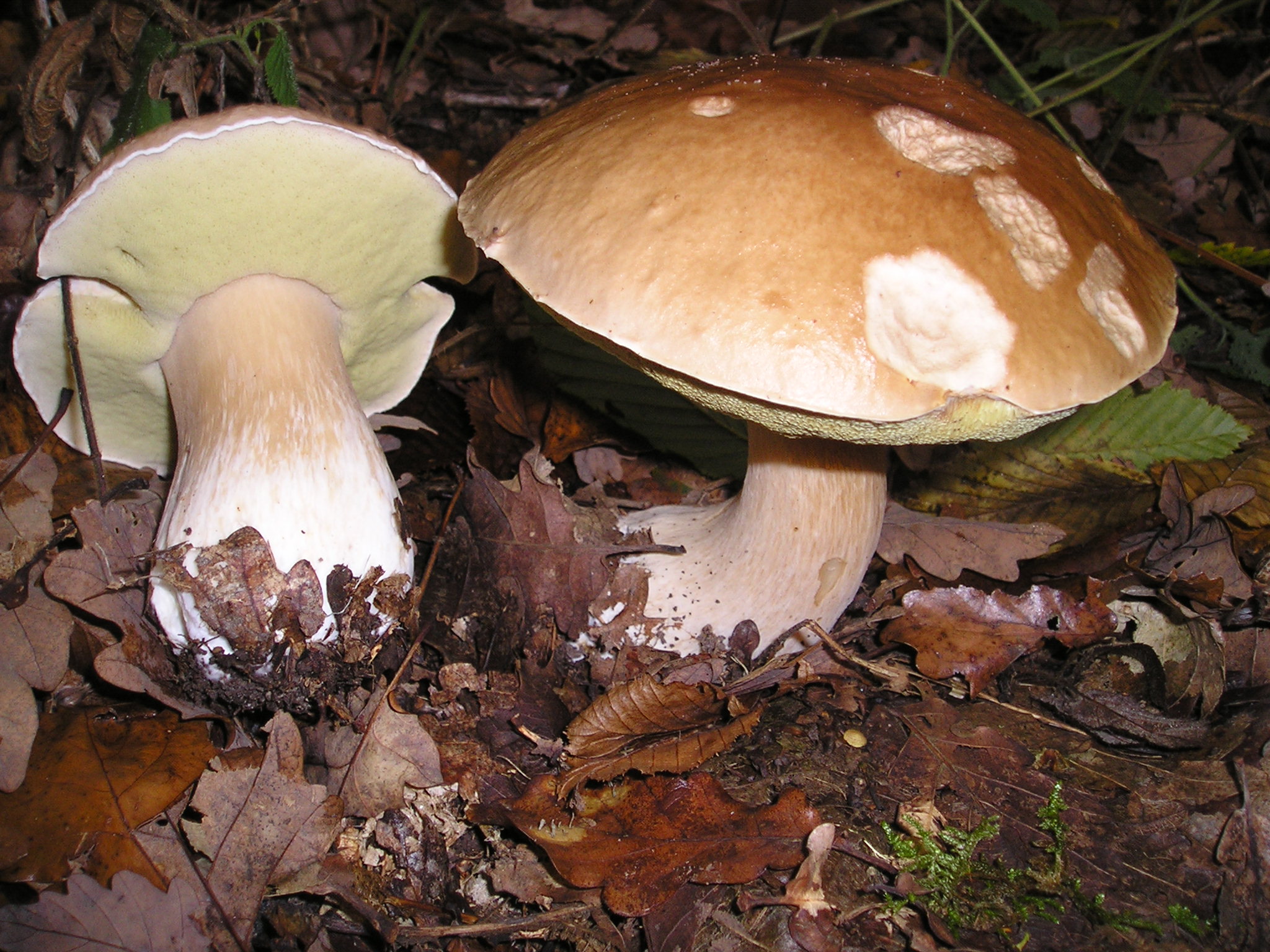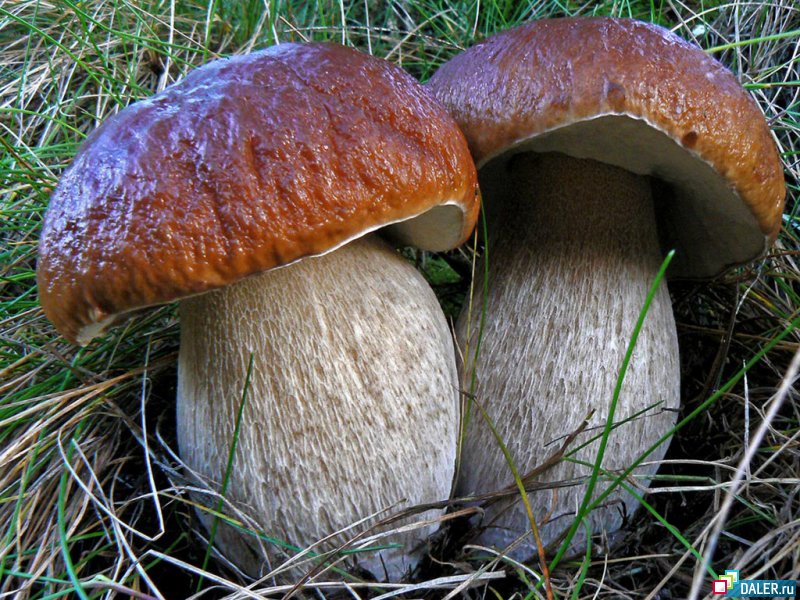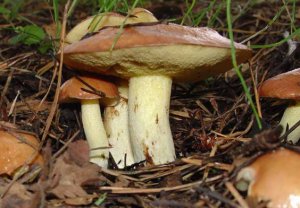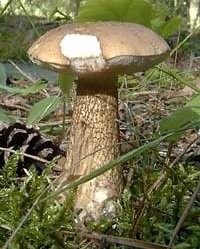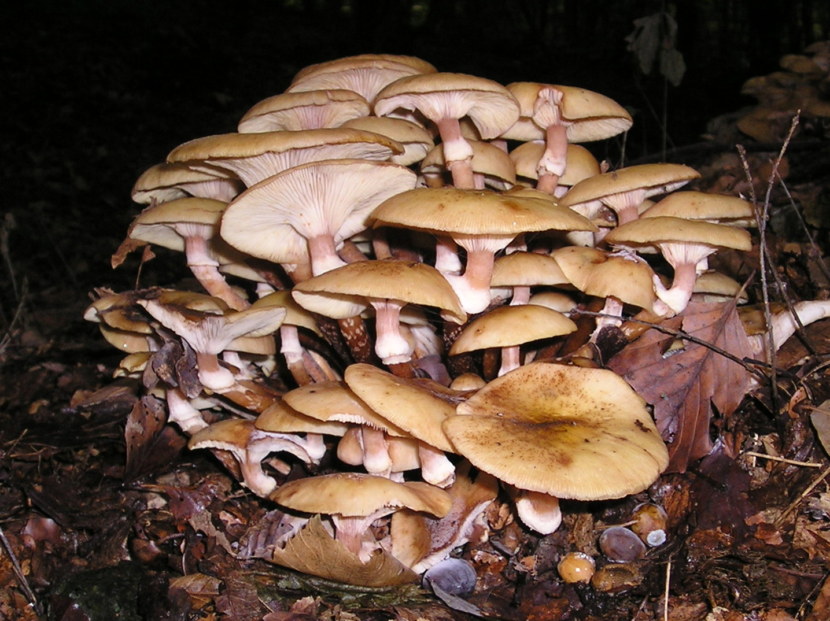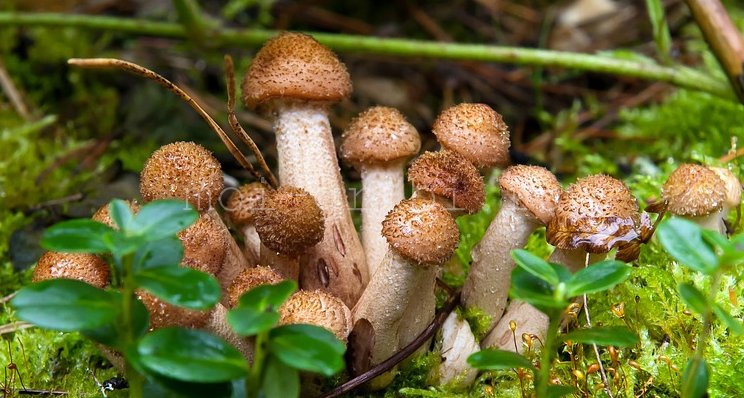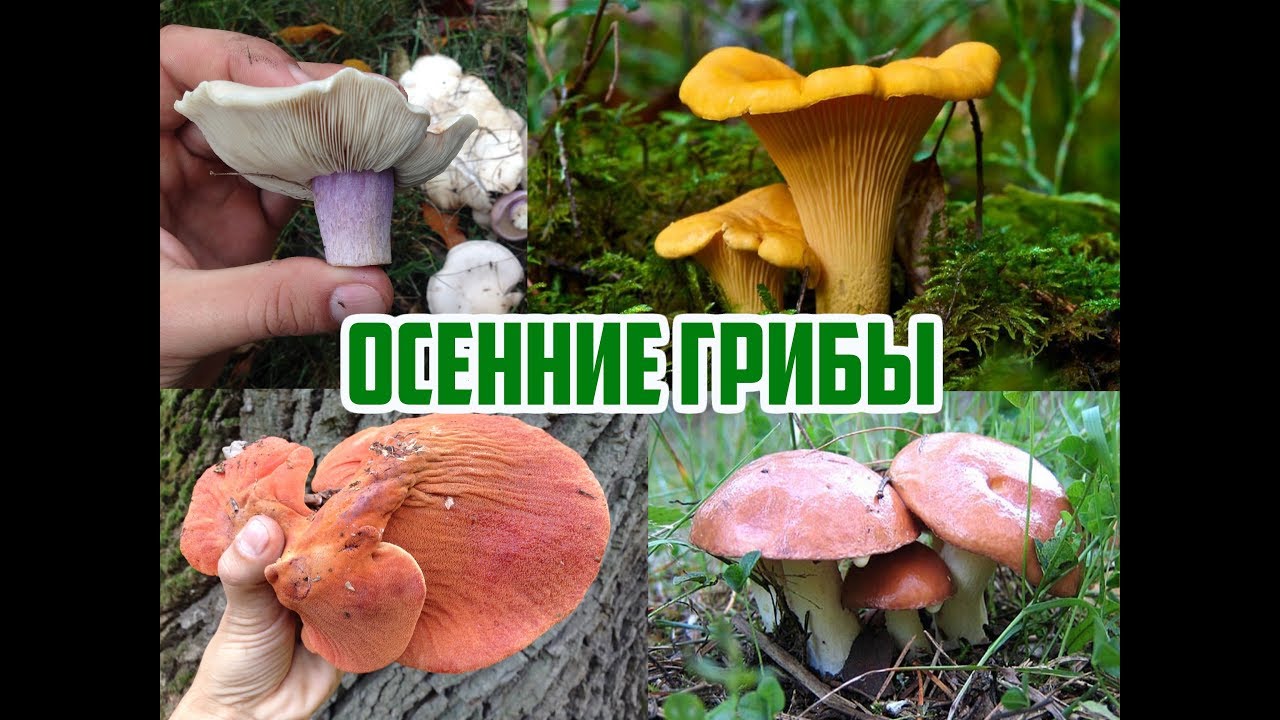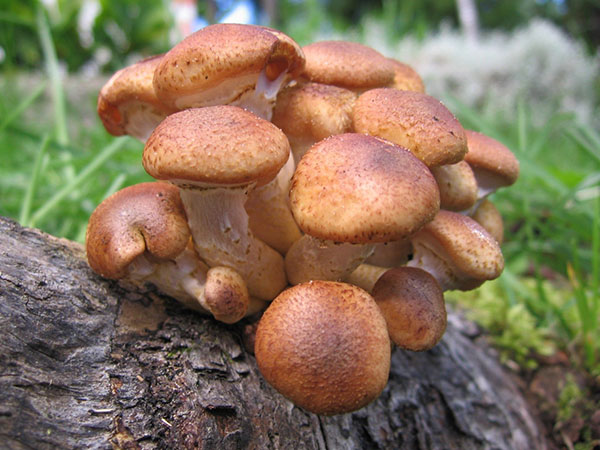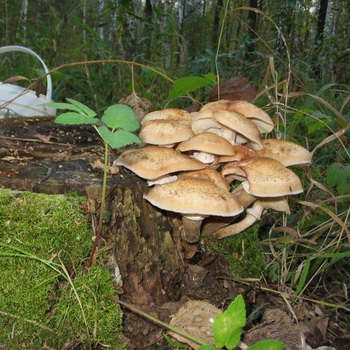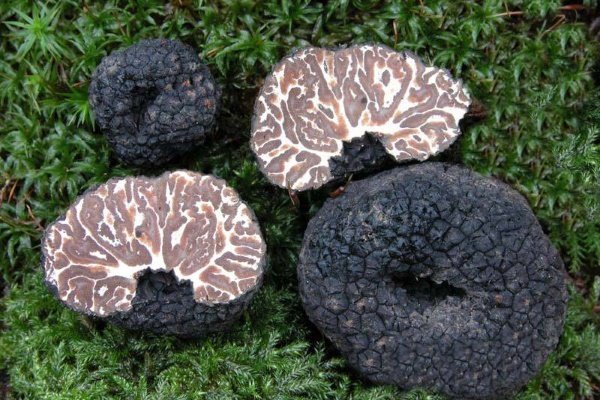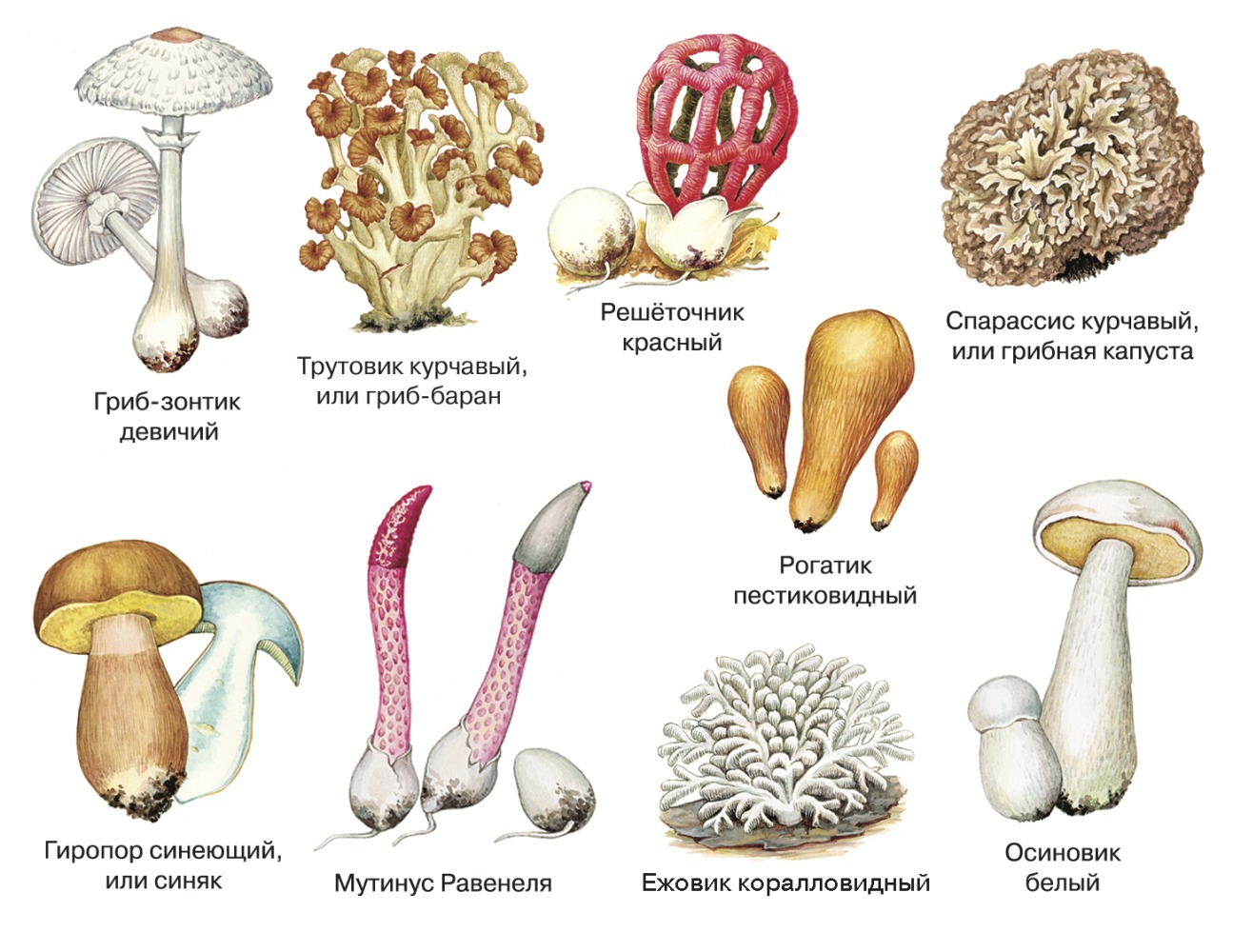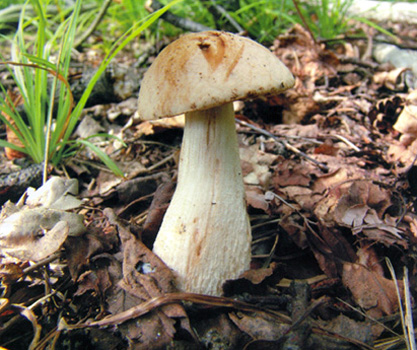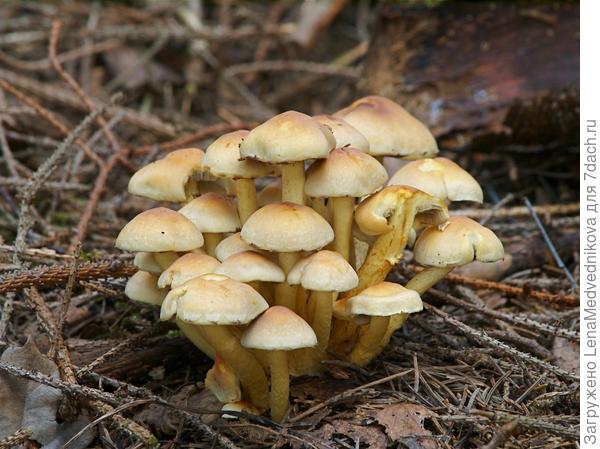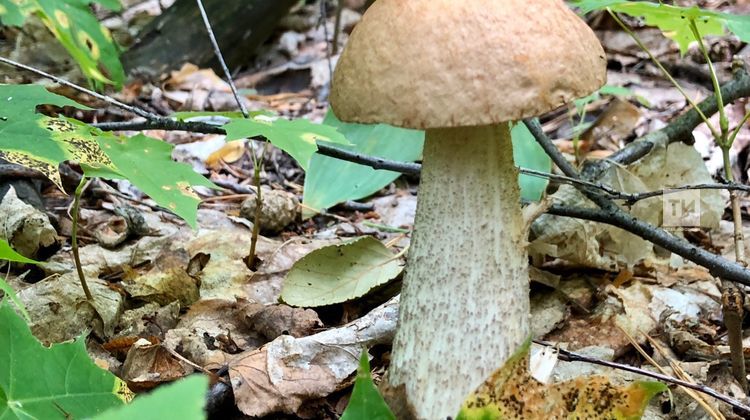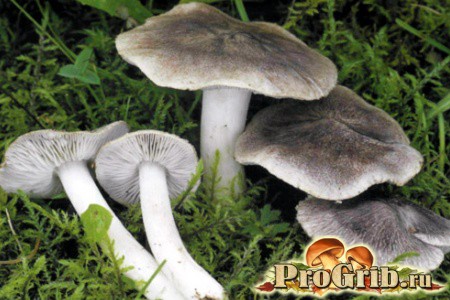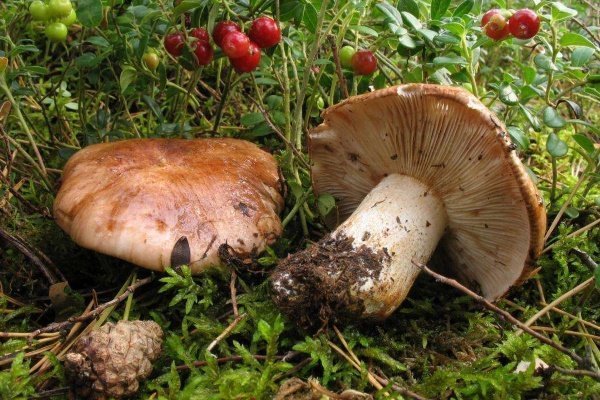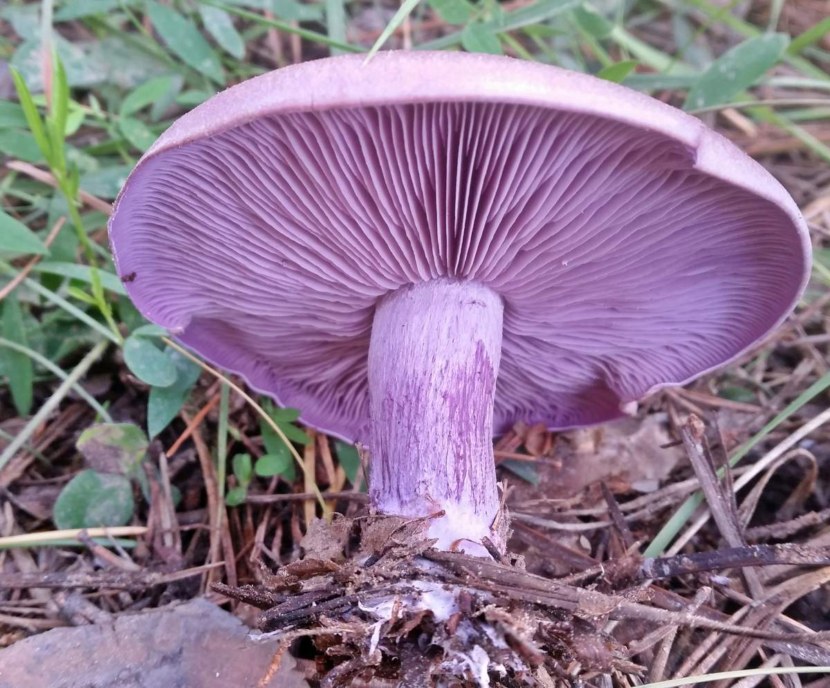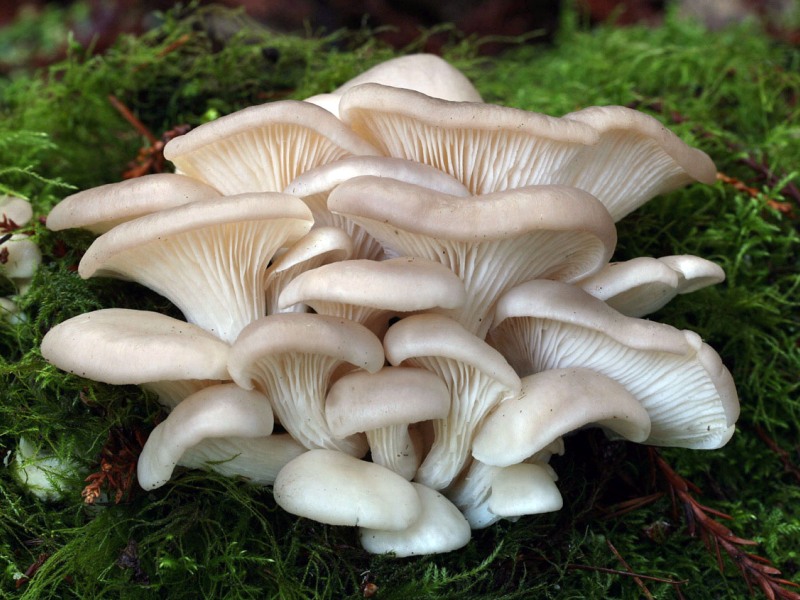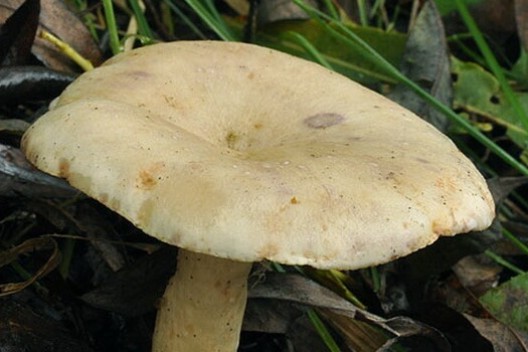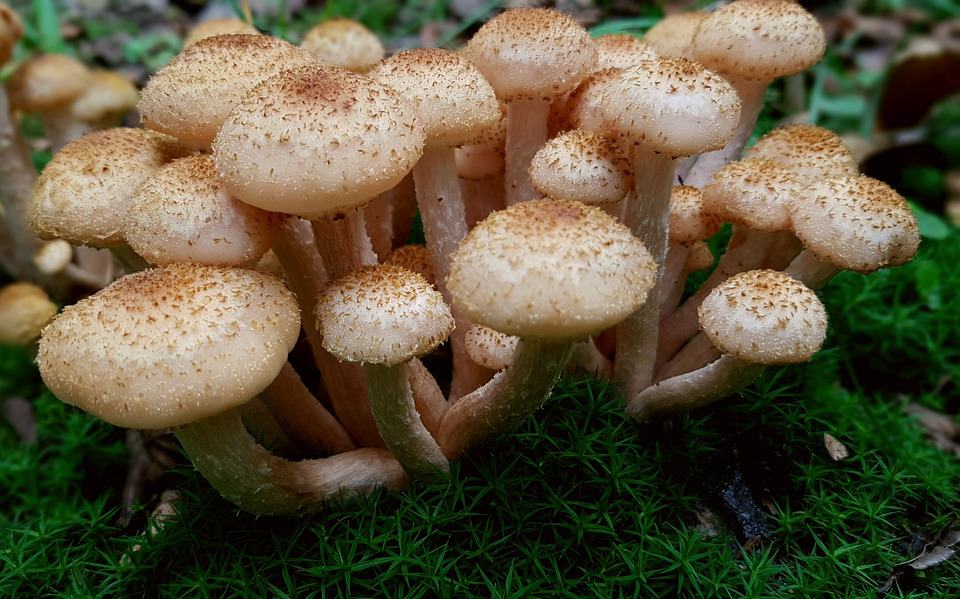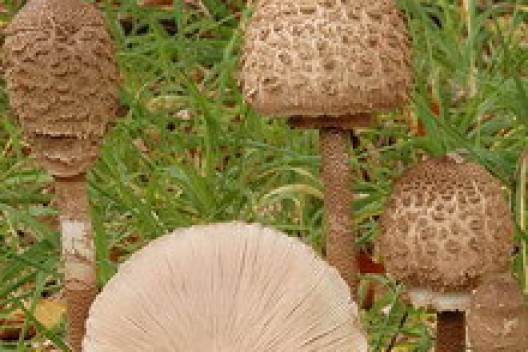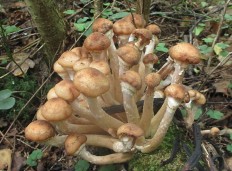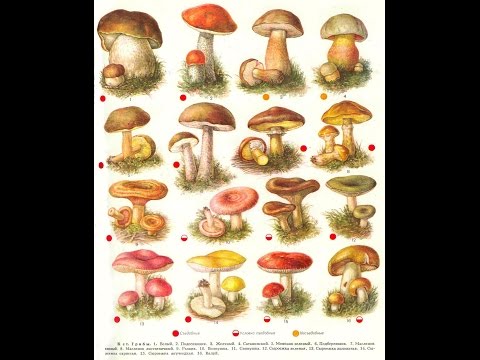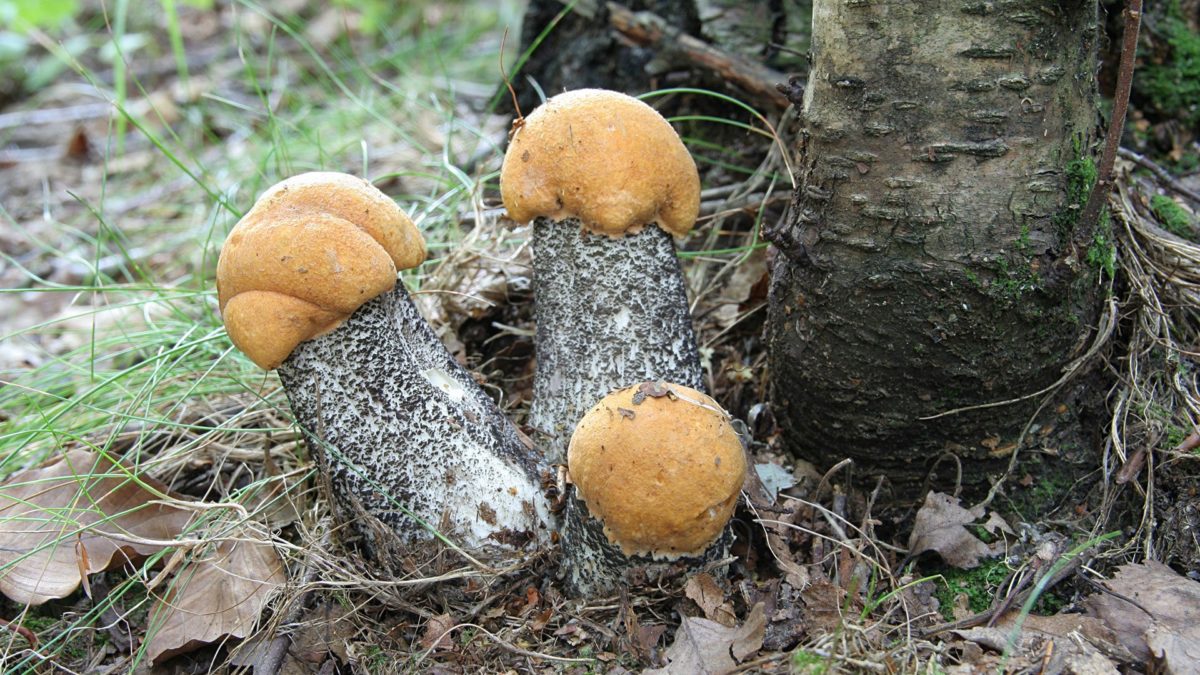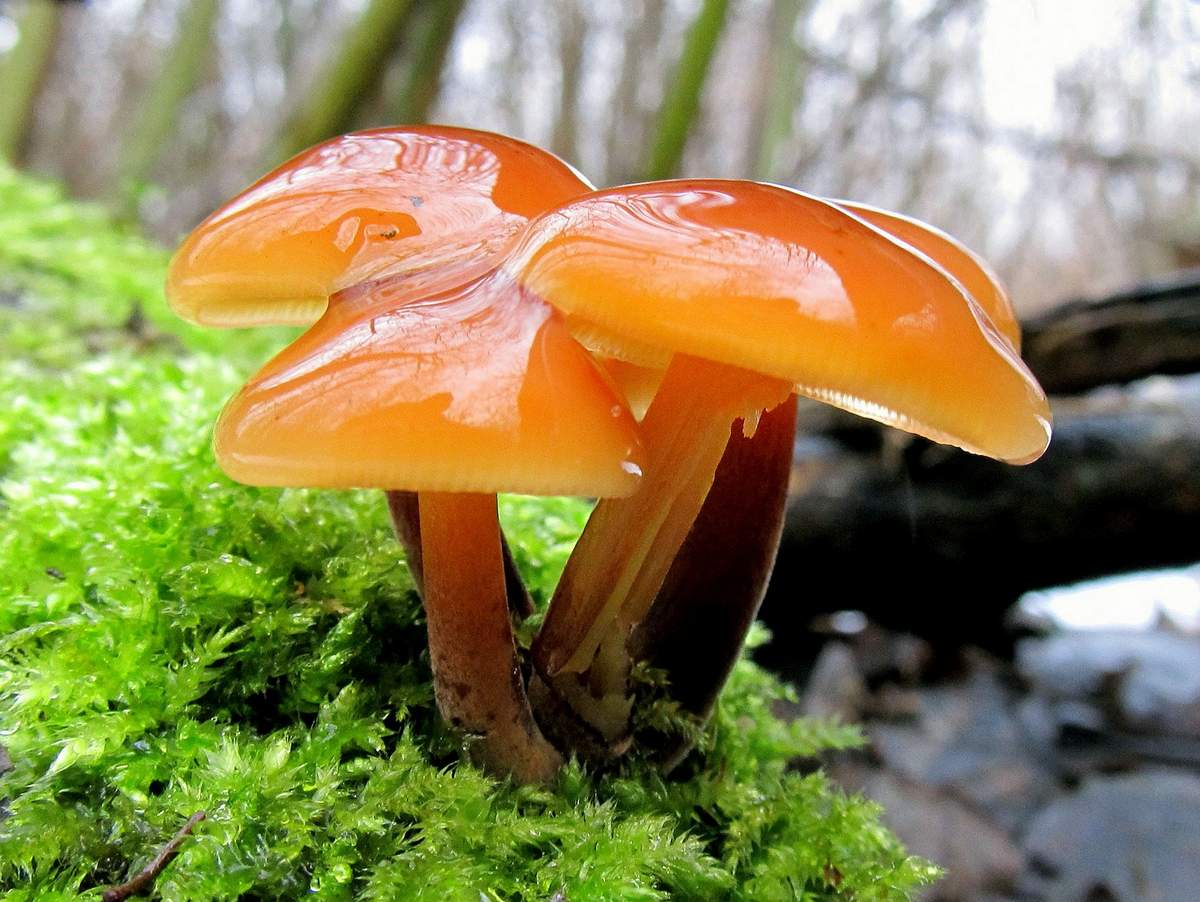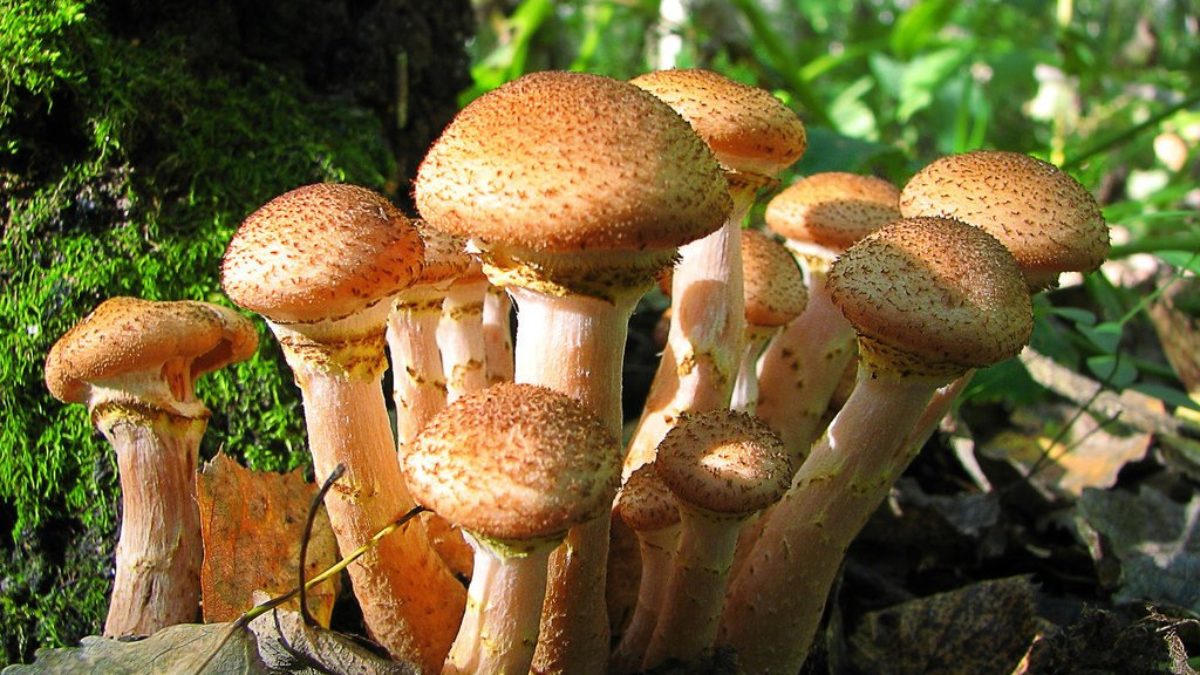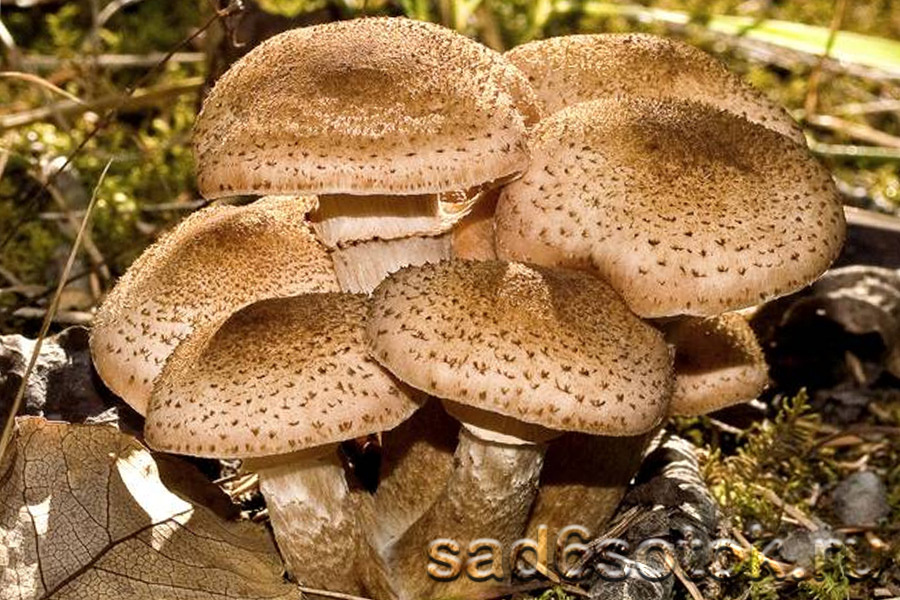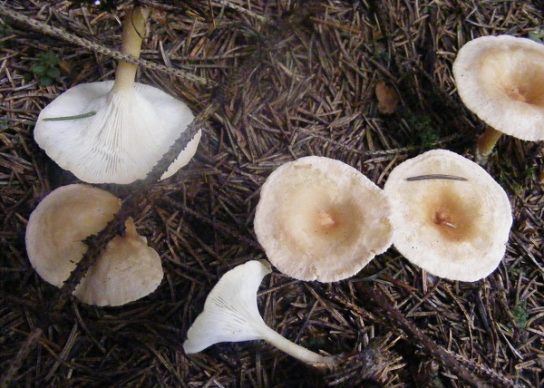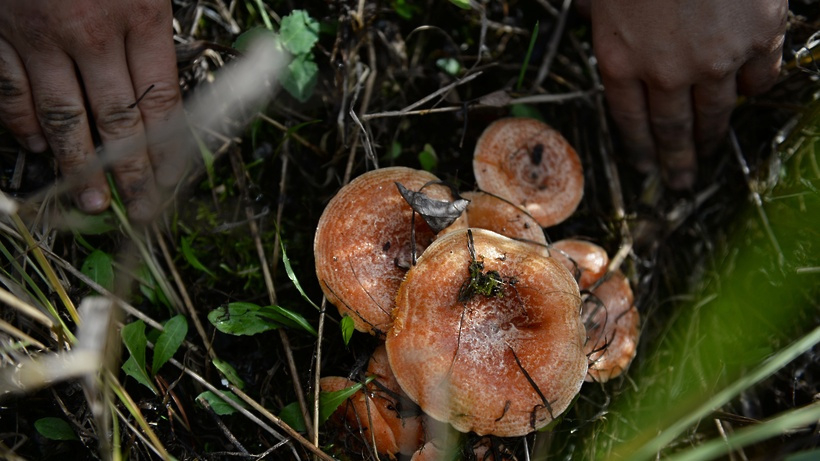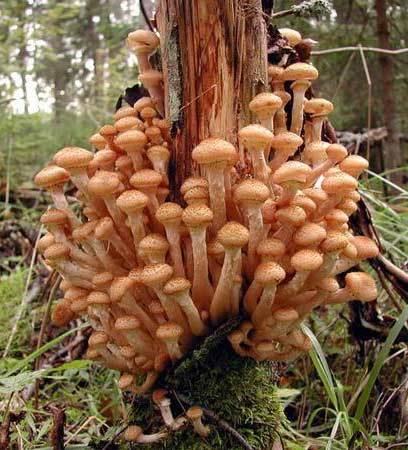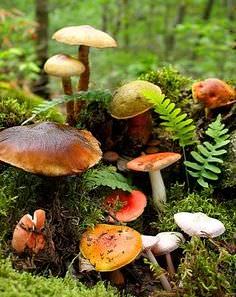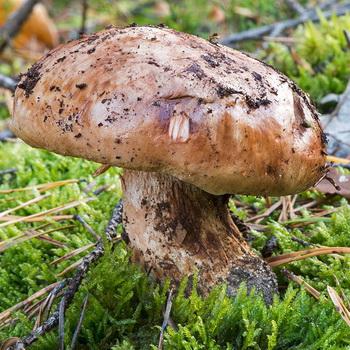What are the benefits of drying?
Dried mainly porcini, boletus, boletus and other tubular mushrooms, as well as honey mushrooms. Other plate mushrooms are most often bitter and break easily. Having cleared of debris, the mushrooms are wiped with a damp cloth. Well dried, they are soft to the touch, slightly springy, but do not break and without droplets of liquid when squeezed. Without drying out, the mushrooms are moist and bend easily. And when dry, they harden, darken, crumble - in this form they are suitable for mushroom powder (after grinding them in a coffee grinder, mix with salt, store in a glass, tightly closed container).
Drying methods:
- in a Russian oven (in several steps);
- in the oven;
- over a hot stove;
- on air.
For 3-4 hours the mushrooms (underside of the caps down in one layer) wilted at 40-45 degrees, then at 60-75 degrees. dry with the door open. Whole (small) mushrooms are dried in the air, strung, so as not to touch, on a strong thread, knitting needles. The larger ones are cut into 2-4 pieces (no thicker than 10 mm) or chopped into noodles. But it is better to dry the mushrooms in a 900-watt electric dryer. First, each tier is filled with mushrooms, then the 55-degree temperature is set for 3-5 hours. To speed up drying, you can swap the trays.
Dry autumn mushrooms are stored in 2020, cooled, in a dry, ventilated room (temperature optimum - 11-15 degrees) for no more than 1 year in jars (glass, tin), tied with gauze in 2 layers or tightly closed with a lid. Can be hung in heavy white cotton bags. The mushrooms are moved at 2-week intervals. If they are damp, they should be dried in the oven or oven.

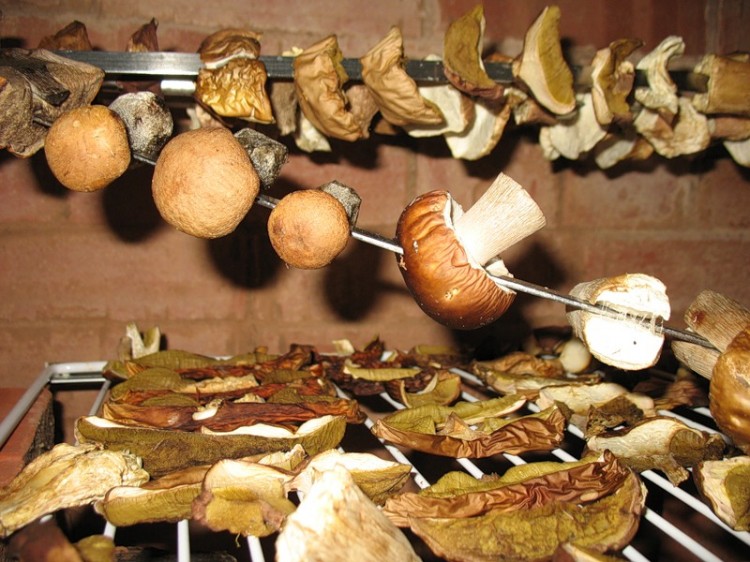
Answers to common questions
When does the mushroom season begin in our forests?
The mushroom season starts in July and lasts until October. The peak yield is observed in August.
Which poisonous mushrooms appear first?
Toadstools usually appear first. They can be seen already in early spring - early or mid-April.
Can an edible mushroom be dangerous to humans?
Mushrooms, traditionally considered edible, can be hazardous to health if grown in an environment with poor environmental conditions. Mushrooms absorb toxic and harmful substances and accumulate them in themselves.
Due to the wide variety of mushrooms, it is important to learn how to identify their species, and collect only those that are not in doubt. Having studied the description of the different types and the rules of "quiet hunting", you can safely collect a rich harvest and prepare many dishes from it.
Old overripe mushrooms
You can not collect and eat old overripe specimens, even if they have not been touched by worms. Such mushrooms are large, friable, and contain breakdown products of proteins and other substances.
The toxins found in old mushrooms can disrupt the respiratory, nervous system and heart rate.
There is even such a saying: "The mushroom has outgrown - a man has found danger on his nose."
Fungi growing in polluted places can also lead to poisoning, since they have the ability to absorb nitrates, pesticides and other harmful substances from the environment. It is forbidden to pick mushrooms near roads, near landfills and under power lines.
Late autumn mushrooms
In the second half of autumn, there are fewer mushrooms in the forest, both edible and poisonous. In addition to the fact that not all mushroom pickers like to walk in the mud during a rainy and chilly period, mushrooms become tough.
The pubescent cap and yellowish mycelium are the hallmark of the lump. Due to the fact that mushrooms prefer to settle in a large family, you can collect a harvest basket from one meadow. Since the mushrooms are well disguised in fallen leaves and needles, they are difficult to notice.Milk mushrooms enter into symbiosis with birches, therefore they are found next to them. Several types of mushrooms are known:
The size of the whitish cap is from 5 to 20 cm. In the center it is concave, slightly covered with mucus, the edge is shaggy. The leg is in the shape of a barrel, hollow inside.
For the village he chooses spruce, birch and mixed forests. There are both single specimens and groups. It is used for food only in a salted form.

Winter mushrooms
The cap grows up to 10 cm. In young mushrooms it is convex, in old ones it becomes flat. At the edge, the color is slightly lighter than the middle, which is yellowish, orange or honey-brown. The length of a thin leg, not exceeding 1 cm in diameter, is from 2 to 7 cm. The structure of the leg is dense. The color is velvety brown, a mixture of red is added on top.
This fungal population is parasitic, growing on damaged or dead deciduous trees, usually willow and poplar.
The name of the mushrooms justifies itself, since even heat treatment does not eliminate the greenish color of the fruit body. They are found in all regions of Russia in small groups (from 5 to 8 pieces), although there are also single individuals. In appearance, they are similar to young russula. They grow in coniferous, deciduous and mixed forests. They bear fruit until they are covered with a layer of snow.
The wide cap (up to 15 cm) of dense structure is rather fleshy. It has a small tubercle in the central part. The color is greenish-yellow or yellow-olive. Sometimes with brownish specks. During the rainy season, the skin becomes sticky.
At the break, the flesh is whiteyellowing on oxidation. Since mushrooms have almost no taste, they are usually not attacked by pests. The leg is short and buried in the ground.
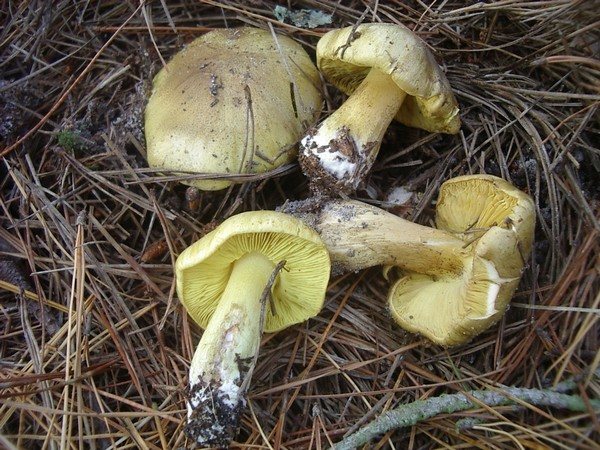
For the development of oyster mushrooms, cellulose is required, so they grow on dead wood or old stumps. Since the mushrooms are inconspicuous in appearance, inexperienced mushroom pickers mistake them for inedible.
The color of the cap is variable, from brownish-gray to bluish. It is darker in the center. Over time, the cap fades. The shape resembles an oyster. In mature individuals, it straightens. Since a group of mushrooms grows from the outlet, their fruiting bodies often grow together. The surface of the mushrooms is glossy to the touch. At high humidity, it is covered with an adhesive layer. The location of the leg is asymmetric, or it is completely absent. Dense white flesh juicy in young fruit bodies, stiff and fibrous in old ones.
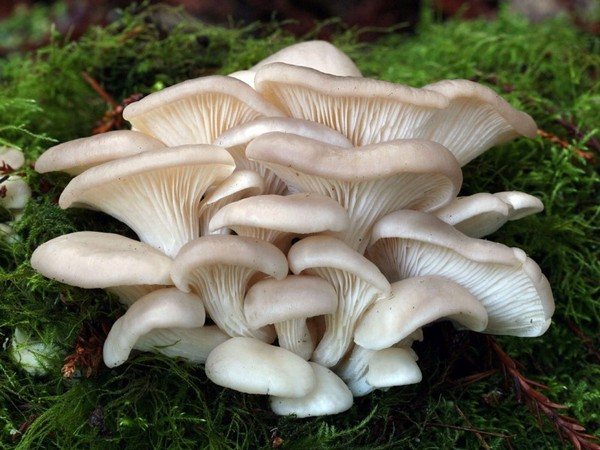
Edible and conditionally edible mushrooms
Edible mushrooms are divided into 4 categories. The factors of difference are their nutritional value and the presence of harmful and toxic substances in them:
Category I - fromGreat-tasting edible mushrooms are those mushrooms that can be eaten without harm to our health. They do not contain any toxic substances and are usually very tasty.
The categories are indicated in the table (list) of mushrooms below. Those that do not have a category are not included in the official sources of the classification.
II category - good taste edible mushrooms.
IV category - conditionally edible mushrooms.
It must be remembered that edible and conditionally edible mushrooms must be properly cooked, pickled, dried, stored and followed all the measures and rules provided for a particular mushroom. In addition, there are many dangerous twin mushrooms that look like edible but are not. It is also worth studying all the rules for assembling and defining edible mushrooms, be very careful.
A list of the most common edible and conditionally edible mushrooms:
|
 |
|
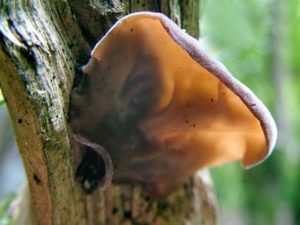 |
|
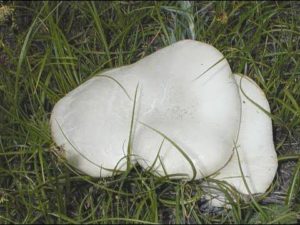 |
|
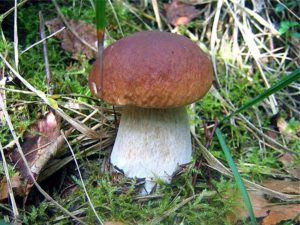 |
|
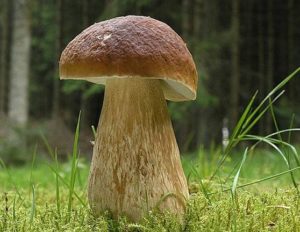 |
|
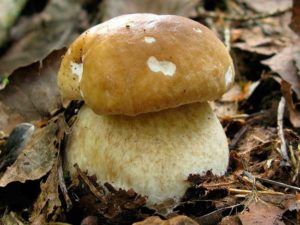 |
|
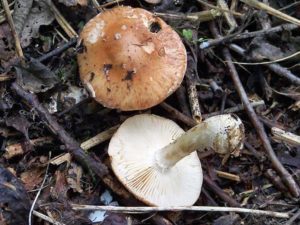 |
|
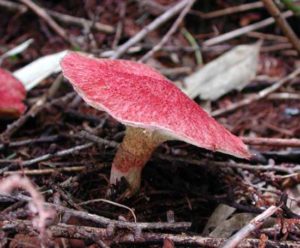 |
|
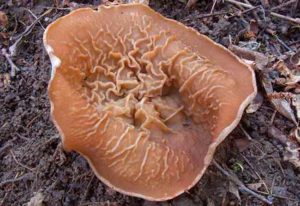 |
|
 |
|
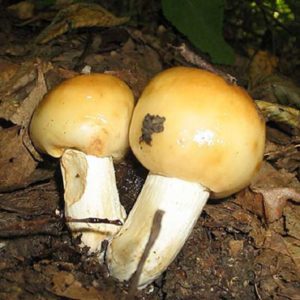 |
Further page is under construction - we apologize for the temporary inconvenience caused.
- Valuy
- Veselka ordinary
- Oyster mushroom (pulmonary, horn-shaped, oyster)
- Volnushka (white, pink)
- Volvariella silky
- Funnel-shaped funnel
- Talker
- Golovach
- Gigrofor
- Lactose
- Dubovik ordinary
- Blackberry yellow
- Winter mushroom
- Motley umbrella
- Lyophillum elm
- Chanterelles
- Pink lacquer
- May mushroom
- Mokruha spruce
- Pine Mokruha
- Oiler
- Mosswheel
- Honey mushrooms
- Boletus
- Boletus
- Pecica
- Reindeer rocking
- Caesar mushroom
- Half white mushroom
- Early polevic
- Float white
- Webcap purple
- Milk lover
- Cobweb
- Putey lion-yellow
- Porkhovka
- Polish mushroom
- Ryzhik
- Sparassis curly
- Russula
- Birch polypore (Birch sponge)
- Sheep polypore (Sheep albatrellus)
- Truffle
- Scale golden
- Champignon
- Shiitake
Conditionally edible mushrooms
Conditionally edible mushrooms can have a high nutritional value, but they cannot be eaten raw. The fact is that such mushrooms usually have a pungent or bitter taste, or contain a weak poison. All this is not a reason to refuse them, because such features can be eliminated by culinary processing (soaking, boiling, etc.), after which the mushrooms become completely edible.
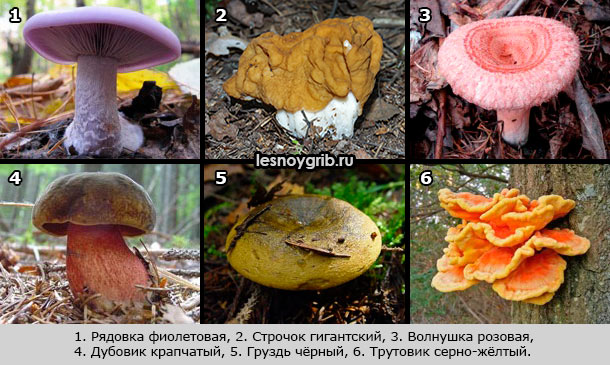
By clicking on the links, you can see a description of the conditionally edible mushrooms from the picture: Purple row, Giant line, Pink flower, Speckled oak tree, Black milk mushroom, Sulfur yellow tinder. To learn about other mushrooms from this category, visit the "Conditionally edible mushrooms".
At what temperature do mushrooms grow in autumn?
Very hot weather is not for mushrooms. In general, mushrooms love humidity and moderate temperatures. The ideal temperature is + 10 + 20 ° С. If summer or autumn is very dry, then you should not count on a good harvest of mushrooms. But even if there are heavy rains in the fall, the mycelium will "get wet". In such weather, there is no good harvest either.
September can be considered ideal, at this time there are a lot of summer mushrooms and cool lovers appear. At this time, you can see boletus, boletus and porcini mushrooms. They can be found even during frosts. It is believed that for the development of the fruit of the fungus, a temperature of + 5 + 10 ° C is required. This is the minimum temperature.
At what temperature do mushrooms grow in autumn?
Despite the decrease in the average daily temperature, a large number of mushrooms can be harvested in autumn. In terms of their taste, they are not inferior to summer ones.
What edible mushrooms grow in a coniferous forest: photo, name and description
This section of the article is devoted to what are edible mushrooms in coniferous and mixed forests.
Autumn honey agaric
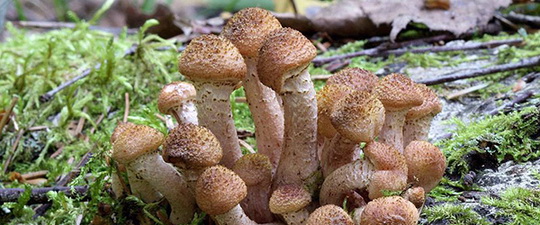
Autumn honey mushroom (Armillari mellea), real honey mushroom. It is found everywhere where there are forests. It usually grows in large colonies on old stumps, on dead wood, near the trunks and on the roots of coniferous and deciduous trees, in clearings, from mid-August to the first frost.
The cap of this edible mushroom of coniferous and mixed forest with a diameter of 2 to 12 cm, thin-fleshy, spherical at an early age, the edges are curved inward, later flat-convex, in the middle with a tubercle, dry, brownish or gray-yellowish in color, in the center - more dark.
The pulp is white, dense, does not change color at the break, has a pleasant mushroom smell and sour taste. The plates are adhered to the pedicle with a tooth or descending, thin, frequent, yellowish-white, covered with small brownish spots. Leg up to 15 cm high with thickness 1-2 cm, cylindrical, slightly thickened in the lower part, with a membranous white ring, which disappears with age, brownish in color, dense, elastic, weakly pulpy in the lower part.
This delicious coniferous and mixed forest edible mushroom belongs to the third category. Fried mushrooms and in soups are the tastiest of all lamellar mushrooms, with the exception of camelina. In marinade and salting, in terms of its taste, it takes place after mushrooms and milk mushrooms.
It is eaten fresh and fried, salted and pickled, dried and canned. It should be salted only after preliminary boiling. Since the legs of the mushroom are highly fibrous, they are almost never used for food, preference is given to hats.
If mushrooms are poorly cooked or salted in a cold way, then poisoning is not excluded.
Autumn honey agaric resembles the inedible common scaly, which is distinguished by an ocher-yellow cap covered with pointed scales. Common flake tastes like a radish.
False, deadly poisonous mushrooms can be mistaken for autumn mushrooms: brick-red and gray-yellow.
Whole russula
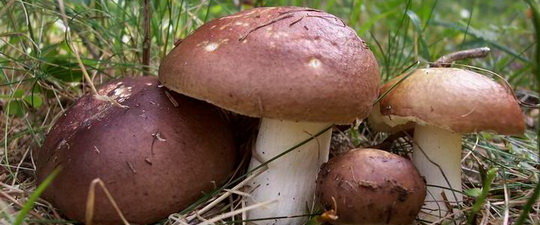
Whole russula (Russula integra) grows in small groups in deciduous and coniferous forests of the southern half of the forest zone of the former USSR, from July to September.
The cap is up to 12 cm in diameter, at first hemispherical, later prostrate, in the middle - depressed, striped, dark red or chocolate, fading to white, with a tuberous pink-red edge.
The pulp is white, firm, slightly pungent. The plates are creamy, then ocher. Spore powder, light ocher.
Look at the photo of this edible mushroom of coniferous and mixed forest - its leg is white, smooth, up to 10 cm long and 3 cm thick:
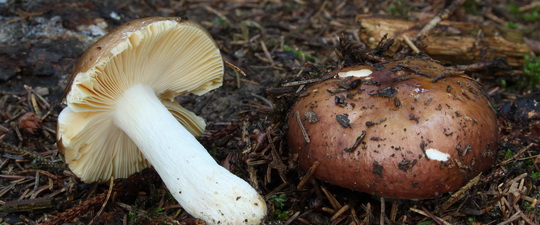
Edible mushroom of the third category. Used fresh and salted, similar to but less swamp russula.
Podgruzdok white
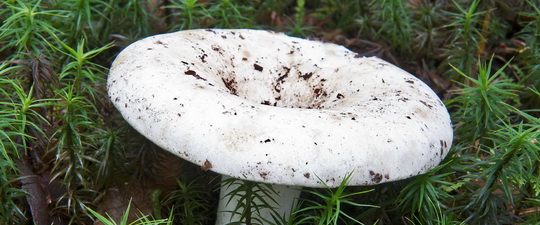
White podgruzdok (Russula dlica), dry lump, is found in the northern half of the forest zone of Russia, in the Caucasus, the Far East, Altai, in Belarus and less often in the Ukrainian Polesie and forest-steppe, in deciduous and coniferous forests, often in large groups from July to October ... Forms mycorrhiza with oak and hornbeam.
The cap is 5-20 cm in diameter, fleshy, dense, dry, dull, thinly pubescent, then naked, flat-convex, with edges bent inward and depression in the middle, white - in young mushrooms and yellowing with age and taking a funnel-shaped shape. On the cap there are usually soil particles adhering to it.
The pulp is dense, fragile, white. Does not change color at a break. Without milky juice, non-caustic, with a pleasant smell and sweetish taste. The plates are white, with a greenish tinge, first adherent, then descending, thin, frequent, branched, bitter in taste. Spore powder is white. The leg is up to 5 cm long and up to 2 cm thick, even, tapering downward, strong, inside first solid, then hollow, white, slightly brownish.
Edible good mushroom of the second category. It is consumed fresh, salted and pickled.
When salted, it has a pleasant white color. It is very similar to milk mushrooms, but does not have milky juice. Since it belongs to the genus russula, it is sometimes believed that it must be boiled before cooking. However, many consider this to be overkill.
Autumn edible mushrooms
This year, the forest gives us especially generously with its gifts, and mushrooms in the autumn forest - even a scythe: boletus, aspen, white, honey agarics, russula, volushka and many more different mushrooms that can be collected until frost.
Autumn white mushroom
White mushroom is the most beloved, valuable and delicious forest product. It has a delicate aroma and excellent taste, it is applicable for drying, frying and all kinds of preparations for the winter.
It has a lot of useful properties, one of which is the content of selenium - an important element in the treatment of oncology. The flesh of the porcini mushroom is firm, clean and juicy
The young mushroom has a convex brown cap, which can reach up to 30 cm in diameter.
The leg is dense, plump and this is a distinctive feature from other species... The stem color can be white or brown. Even inexperienced mushroom pickers will recognize such a copy and will definitely put it in their baskets.
You need to know that the porcini mushroom is the most susceptible to a dirty environment and instantly absorbs all harmful substances.
Birch
Boletus is the most widespread and popular mushroom in our country. This name is given to him from the fact that it grows in birch forests on sunny edges. The nutritional value of this mushroom is believed to be similar to that of meat.
In terms of the content of amino acids and minerals, it is only slightly inferior to the porcini mushroom. Boletus is difficult to confuse with other mushrooms.
It has a pretty brown cap, sitting on a thin stem, 10 to 12 cm high. Autumn boletus boletuses are distinguished by a dense and thick stem. People call it "obabk".
Boletus: photo and description
Strong handsome men with red hats are hiding under the aspen trees in autumn, they are popularly called "red-headed". Aspen usually grow in aspen forests, which is why they got this name. In autumn foliage, mushroom caps are barely distinguishable.
Aspen mushrooms are always distinguished by a bright color of the cap, which grows up to 20 cm in diameter and has a velvet surface.
The strong high leg of the mushroom thickens towards the bottom, and on its surface there are small brown scales. When cut, the leg turns blue, and then turns black, like the flesh of the cap.
Russula red
Russula are small mushrooms of different colors on light legs. What russula are there? Cute russules are pleasing to the eye and come in pink, yellow, red and blue. Yellow specimens are considered dangerous, because they can be easily confused with pale toadstool. Therefore, it is not recommended to collect them.
Russula are lamellar types of mushrooms. The plates are located on the inside of the cap and are from white to yellowish.
Mushrooms have a pleasant taste and a cap with dense flesh on a low stem.
An adult specimen becomes fragile and crumbles easily. Usually they are collected only by lovers of russules, since they do not differ in special value for the human body.
Butterlets: description, photo
Butterlets got their name from the sticky and shiny bonnet. The mushroom is beautiful and looks as if it was greased with oil on its hat. Butterlets are small and medium in size.
A yellow or light brown cap grows no more than 15 cm in diameter. The color depends on the illumination in the forest. The darker the forest, the brighter and more saturated the color of oil.
Returning from the forest, the top sticky film is removed from the cap of the butter, since it tastes bitter and the mushroom is eaten without it. Small-sized butterflies marinated for the winter are a noble delicacy!
Pink hair
Waves appear in forests by autumn. In our country, they are popular and are used for salting. Such mushrooms are popularly called "salting".Volnushka has many varieties that differ in appearance, but are almost the same in taste. More often than others, a pink wave or "Volzhanka" is found in the forests.
Mushroom matryoshka: photo and description
The matryoshka has a brown velvety cap that grows up to 20 cm in diameter. The leg is short, darkens when cut. The mushroom has a tough and thick flesh. Typically grown in whole groups, it is considered edible and is suitable to be eaten roasted. Although, it does not differ in special taste.
According to scientists, matryoshka has antitumor properties and is a natural antibiotic. But some mycologists speak negatively about these mushrooms and do not advise using them in food, so as not to harm health, since the mushroom is capable of absorbing and accumulating harmful substances and heavy metals in large quantities.
Types of honey agarics
Let's start with a pleasant one, namely with edible and tasty mushrooms, because they make up the overwhelming majority on our list. However, it is worth noting that there are not so many poisonous mushrooms in nature at all.
1. Summer honey mushroom (Kuehneromyces mutabilis) - Edible.
This mushroom appears in the forest earlier than most other species of honey agaric. Sometimes you can meet him at the beginning of May. The very same name "summer" should be considered conditional, because it occurs in late spring, summer and autumn. The mushroom grows most often in large groups, on stumps, dry and rotten wood. Summer honey mushrooms can rightfully be considered one of the most delicious representatives of honey mushrooms. The mushroom has a very pleasant smell, excellent for various culinary treatments. Summer mushrooms can be fried, pickled and even made into soup.
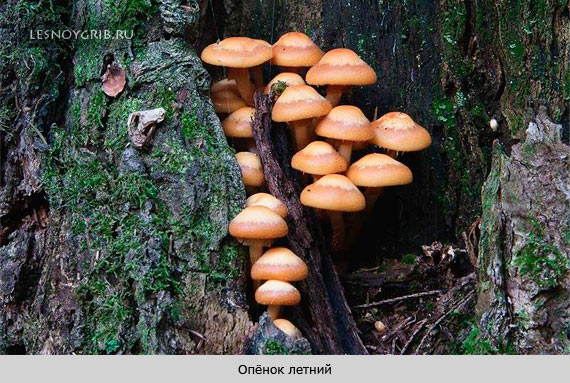
2. Autumn honey fungus (Armillaria mellea) - edible.
The most popular and recognizable species of honey agaric is undoubtedly the autumn honey agaric. It begins to grow actively from the end of August, when the average daily temperature drops to around 10-15 degrees Celsius, and ends its fruiting only in late autumn. The fungus often parasitizes on weakened living trees of various species, it also grows on dry wood, stumps, and dead wood. It is often found in numerous families, which sometimes cover a significant part of the tree's surface. Autumn honeydew contains many useful microelements. Boil the mushroom before eating, as it can cause mild stomach upset when raw. Autumn mushrooms are used for salting, pickling, drying and frying.

3. Meadow honey fungus (Marasmius oreades) - Edible.
This small and inconspicuous fungus from the non-nipple family has received recognition from many mushroom pickers, due to its widespread use in cooking. Meadow mushrooms are fried, dried, salted and made into soup. These mushrooms grow in groups from June to October, sometimes forming whole rows of mushrooms. Most often they appear in open spaces - the outskirts of fields, meadows, forest edges, in gardens and vegetable gardens. An interesting fact is that some people prefer to cut this mushroom with scissors, since it is not very convenient to do this with a knife due to its small size.

4. Winter honey mushroom (Flammulina velutipes) - edible.
One of the few mushrooms that can grow in winter. In conditions of subzero temperatures, winter mushrooms do not lose their taste, so they can be collected even in ice cream. These mushrooms grow from late autumn to spring, choosing for your the appearance of trunks of weakened living trees, stumps, various rotten wood. Winter mushrooms are found not only in the forest, but also in parks, courtyards, and even in the city. Before eating, the mushroom should be boiled for 15-20 minutes, after which it is usually salted and pickled.
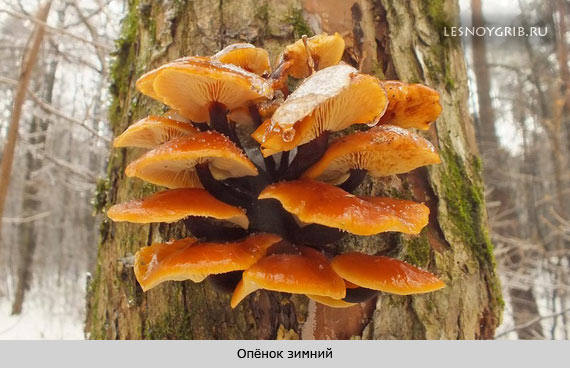
False mushrooms
All representatives of false agarics belong to one common genus "Gifoloma", which indicates their close relationship, and, accordingly, similarity in appearance.
1. Pseudo-lamellar seroplate (Hypholoma capnoides) - Edible.
An absolutely edible mushroom of good quality, despite the fact that it is classified as a false mushroom. The main feature of the gray-lamellar false foil is the fact that it grows exclusively on stumps and decaying wood of coniferous trees. In the overwhelming majority of cases on pine, less often on spruce. The danger for inexperienced mushroom pickers lies in its great similarity with the poisonous sulfur-yellow false foil, which is described below. Therefore, remember that you should not take a mushroom from the forest that you are not sure about! In cooking, it is used in a similar way to summer honey.
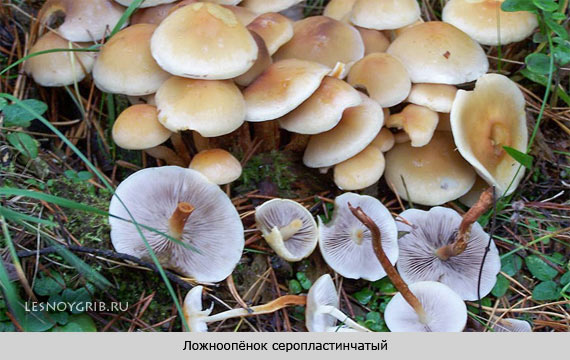
2. Pseudo-foam brick-red (Hypholoma lateritium) - conditionally edible.
Quite a controversial mushroom, since different sources indicate different information about its edibility. Some authors describe the brick-red pseudo-foil as slightly poisonous, while in most books it is described as edible. Grows on stumps and decaying deciduous trees throughout the summer and fall. It bears a resemblance to the poisonous sulfur-yellow false foil. On the forums, you can meet people who collect brick-red false foam, but personally I have never taken it, and why, when there are other edible and tasty mushrooms?

3. False foil sulfur-yellow (Hypholoma fasciculare) - poisonous.
Poisonous representative of false agarics. In the forest, the mushroom is found from late May to late autumn. It prefers to grow on rotten trees, stumps, and sometimes on the ground if there are remains of decaying wood in it. Sometimes it bears fruit very massively. Sulfur-yellow pseudo-froth is very similar to edible seroplate-like pseudo-foam. It is worth highlighting two main differences between these mushrooms: 1. sulfur-yellow pseudo-honey has greenish plates (in gray-lamellar they are gray), 2. gray-lamellar honey fungus grows exclusively on coniferous trees (pine, less often spruce), sulfur-yellow on any. When eaten, sulfur-yellow false foams cause stomach upset, nausea, vomiting.


